Abstract
Two basic experiments defined a long-day inhibitory effect on Xanthium flowering: the basal half of a single leaf on long day inhibits response of the tip half to a short day; and a long-day leaf inhibits response of a short-day leaf, providing it is between the short-day leaf and a receptive bud (whether above or below the short-day leaf). Five hypotheses were explored with the conclusions that the tip half can synthesize florigen, and inhibition is not due to prevention of florigen synthesis, translocational effects, or a translocatable long-day inhibitor. Inhibition is localized and may be a condition of the leaf or a relatively immobile substance. Studies of critical dark period, light intensity, and interruption of a dark period show that, when the leaf is not producing florigen, it is actively inhibitory. Immature leaves are more inhibitory than older leaves. The effect was found not to pass dead tissue, and iron-deficient tissue will cause inhibition, though it will not cause promotion.
Full text
PDF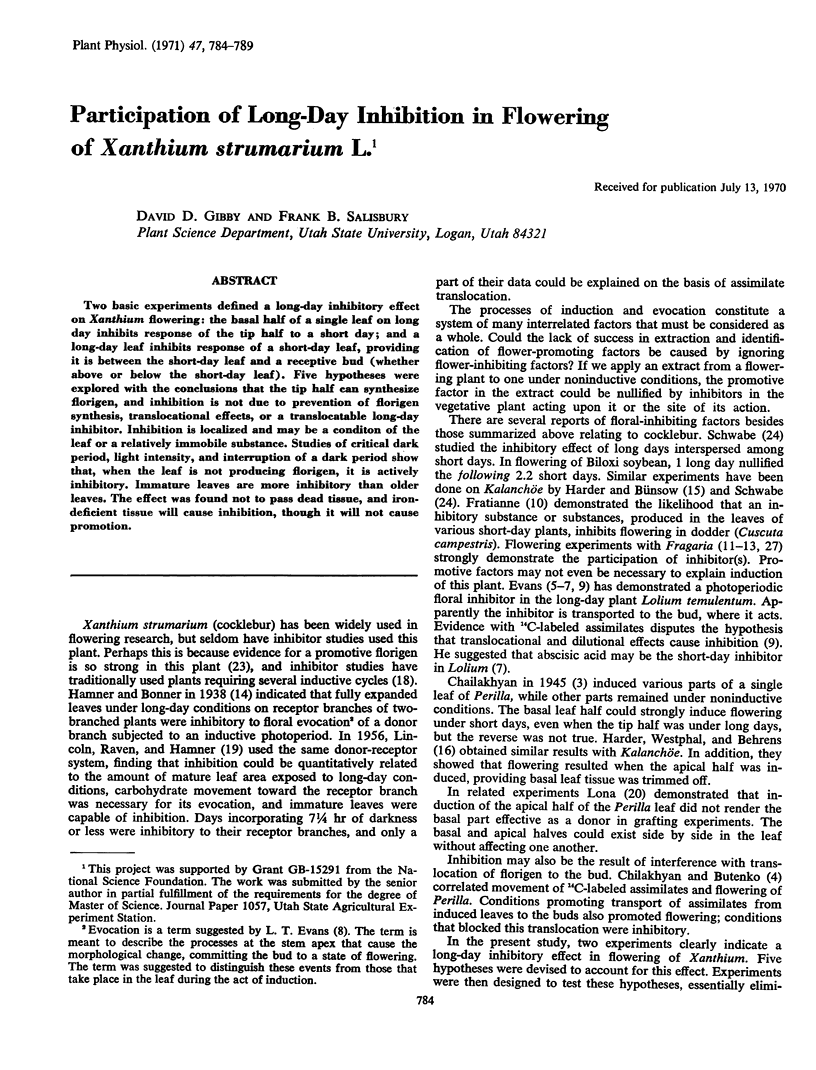
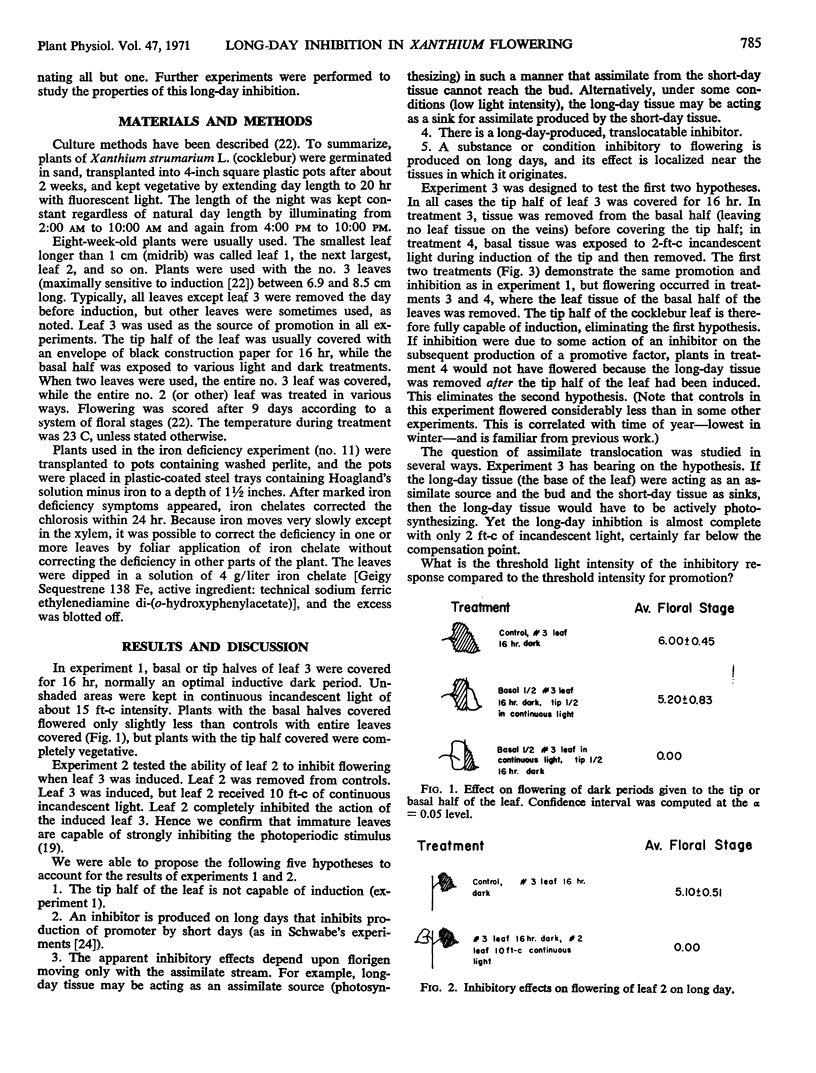
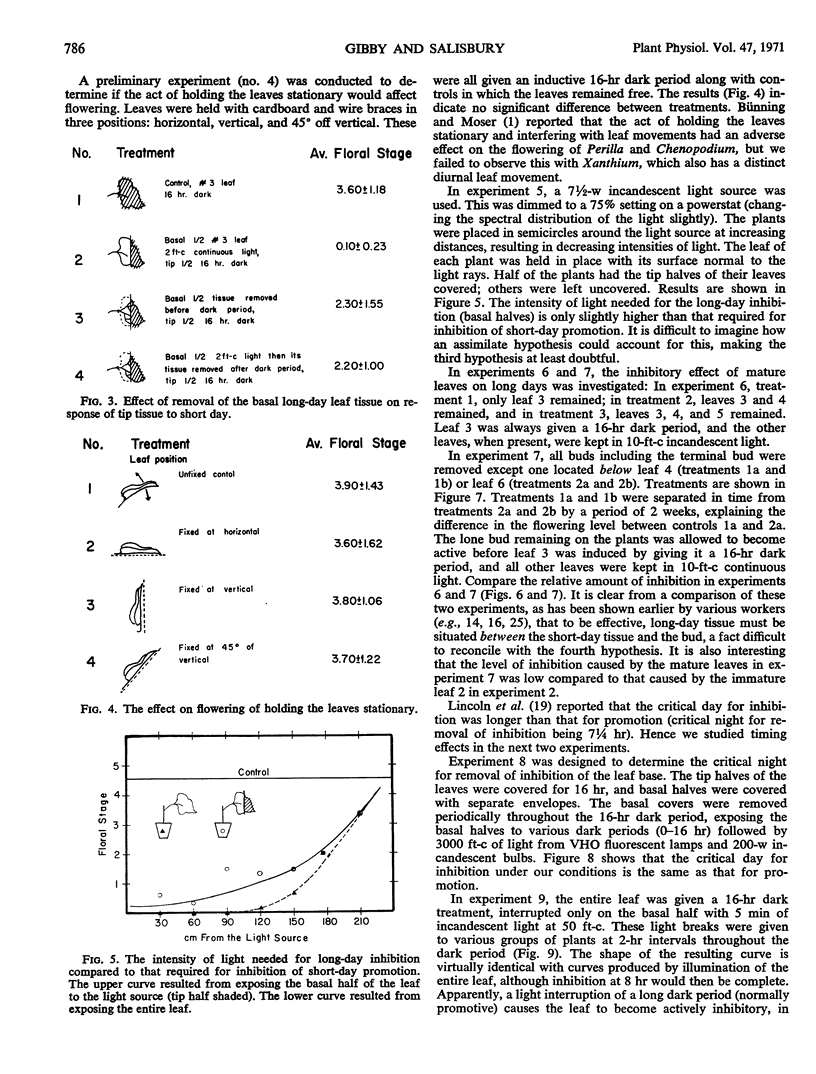
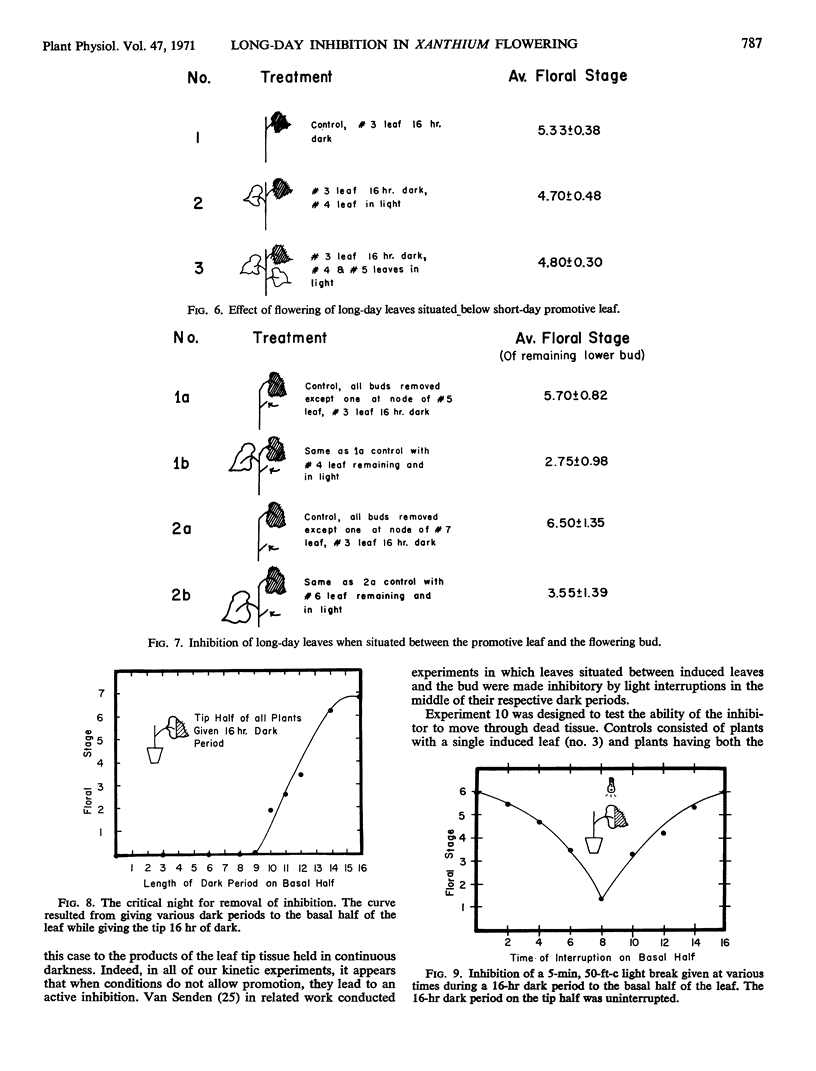
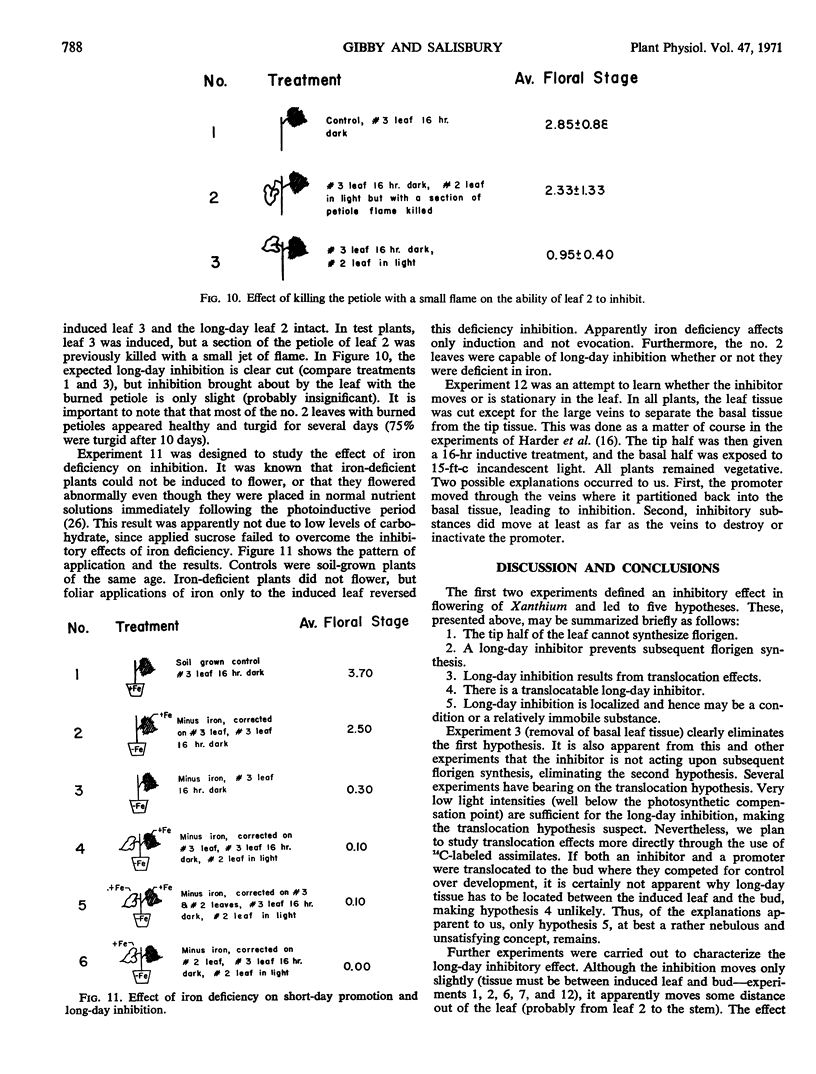
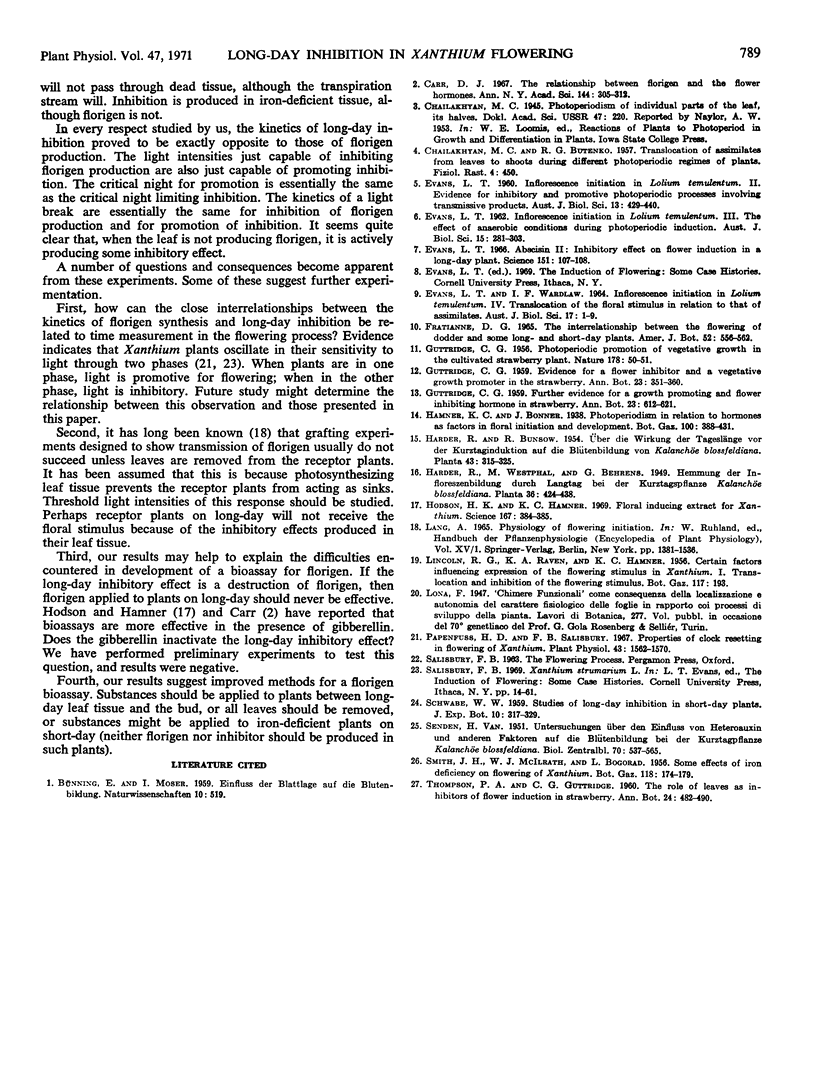
Selected References
These references are in PubMed. This may not be the complete list of references from this article.
- Evans L. T. Abscisin II: Inhibitory Effect on Flower Induction in a Long-Day Plant. Science. 1966 Jan 7;151(3706):107–108. doi: 10.1126/science.151.3706.107. [DOI] [PubMed] [Google Scholar]
- Hodson H. K., Hamner K. C. Floral inducing extract from xanthium. Science. 1970 Jan 23;167(3917):384–385. doi: 10.1126/science.167.3917.384. [DOI] [PubMed] [Google Scholar]
- Papenfuss H. D., Salisbury F. B. Aspects of clock resetting in flowering of xanthium. Plant Physiol. 1967 Nov;42(11):1562–1568. doi: 10.1104/pp.42.11.1562. [DOI] [PMC free article] [PubMed] [Google Scholar]


